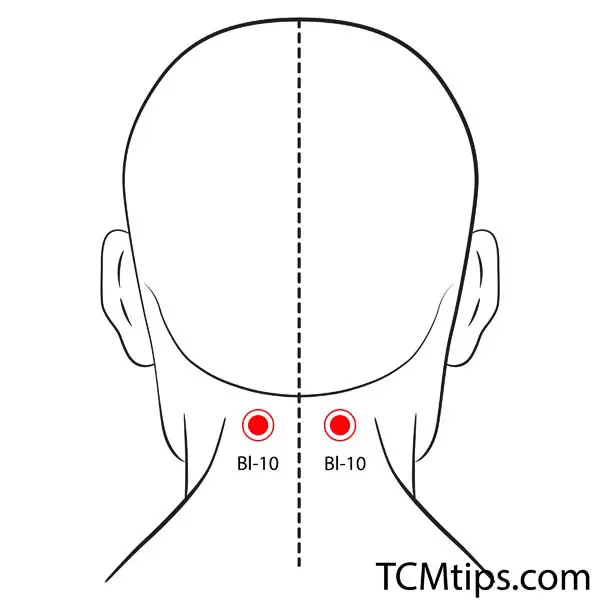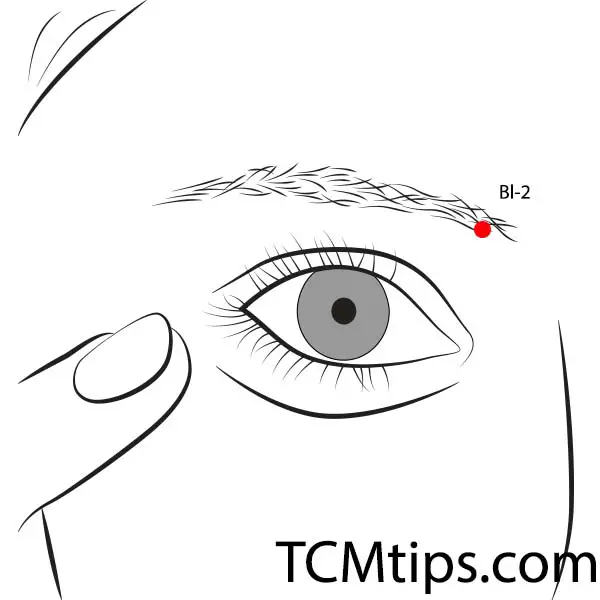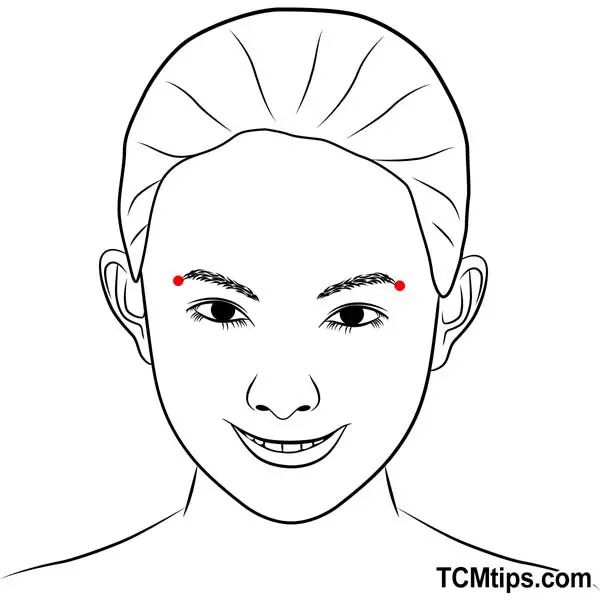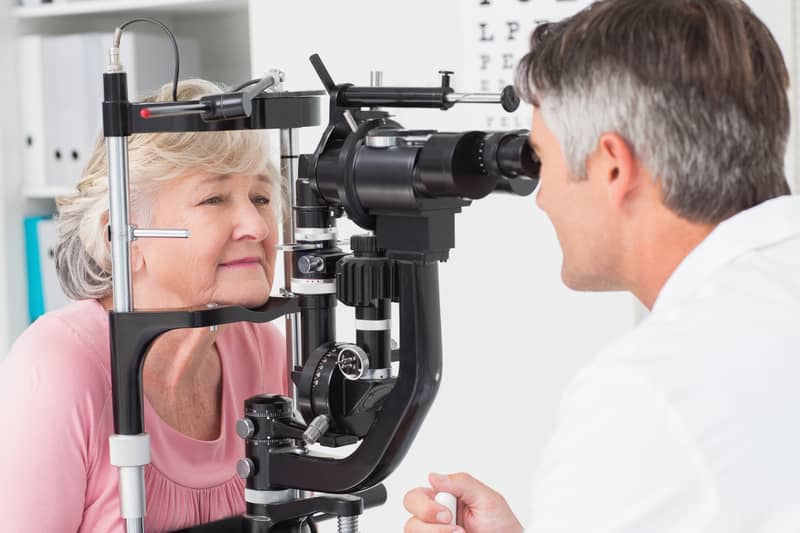Acupuncture is a traditional Chinese medical practice that involves inserting thin needles into the skin at strategic points on the body. Though it is often used to treat pain, recent studies have shown that acupuncture may also be effective in lowering intraocular pressure and treating patients with glaucoma.
Glaucoma is a degenerative eye condition that can lead to blindness. Current Western Medicine treatments for glaucoma patients involve medication or surgery, but these treatments can be expensive and invasive with a short-term effect.
Acupuncture, on the other hand, is a relatively inexpensive and non-invasive option for the treatment of glaucoma. To enjoy the beneficial effects of acupuncture, first, you’ll need to know what are the acupressure points for glaucoma.
Does Acupuncture Help Glaucoma?

If you are wondering whether can acupuncture help with glaucoma, a clinical trial was conducted in 2020 to evaluate the effect of Laser Acupuncture in the treatment of open-angle glaucoma.
Acupoint TE-23 was one of the acupuncture points used in this study’s intervention. The acupuncture for glaucoma evidence showed that the effects of acupuncture were an effective technique for minimizing blood flow abnormalities in the central artery of the retina in patients with open-angle glaucoma.
What Are The Acupressure Points For Glaucoma?
Acupoint: Bl-10 (Other Names: Urinary Bladder-10/Tian Zhu/Celestial Pillar)

The acupressure point “BL-10”, is represented in mandarin as “Tianzhu” and in English as “Celestial Pillar.” This acupoint for glaucoma acupuncture can be located 0.5 cun below the occipital hollow and 1.3 cun lateral to the midline, near the top of the neck, on the outside border of the trapezius muscle.

To use this glaucoma acupuncture point, massage both sides simultaneously with moderate pressure directed slightly towards the spine. It is classified as the Sea of Qi point and Window of the Sky point. Bl-10 is one of the pressure points in the neck that expels wind, activates the meridians, relaxes the sinews, benefits the head, relieves pain, and opens the sensory orifices.
Acupressure to improve eye glaucoma can be accomplished by gently pressing BL-10 with your finger for 30 seconds or until you are compelled to take a deep breath.
According to a published Traditional Chinese Medicine essay, Tianzhu (BL-10) faces the eyeball anteriorly, and the Foot Taiyang Meridian originates from the eye region.
This acupoint is closely linked to the eyeball and has the effects of promoting blood circulation and benefiting eyesight, as well as removing blood stasis and resolving hard mass, to eliminate stagnated qi and blood in the eyes, making it an important acupoint for treating diseases of the eye including treatment of glaucoma.
Acupoint: Bl-2 (Other Names: Urinary Bladder-2/Zan Zhu/Gathered Bamboo)

The acupressure point “BL-2”, is represented in mandarin as “Cuanzhu” and in English as “Bamboo Gathering.” It can be located on the face, on the supraorbital notch, and in the depression on the medial end of the brow.
Wind is expelled, the eyes are brightened, the liver is soothed, obstructions in the channel are removed, and pain is relieved through this acupoint. Acupoint BL-2 is used as an acupressure autoimmune inflammation point that is helpful with conditions such as pain and discomfort in the supraorbital region, blurry vision, visual field defect, redness, puffiness, pain in the eye, hiccup, and diaphragmatic spasm. It is an important acupoint for glaucoma acupuncture therapy in Traditional Chinese Medicine.
Apply downward pressure on the point with your thumb or finger for a few seconds. Release and reapply as many times as you want.
A clinical trial was conducted in 2015 to examine the efficacy of acupuncture in patients with glaucoma. Acupoint BL-2, situated on the medial end of the brow, is part of a set of acupuncture points surrounding the orbit that is thought to have a better therapeutic impact in treating ocular illnesses than distant points and was thus used in this acupuncture for glaucoma evidence.
Acupoint: Bl-9 (Other Names: Urinary Bladder-9/Yu Zhen/Jade Pillow)

The acupressure point “BL-9”, is represented in mandarin as “Yuzhen” and in English as “Jade Pillow.” It can be located 2.5 cun superior to the posterior hairline, 1.3 cun lateral to the midline, level with the superior border of the external occipital protuberance, on the back of the head.
This acupoint expels wind and benefits the nose and eyes. It is a significant point for glaucoma acupuncture therapy that relieves pain, nasal congestion, shivering, fever, occipital headaches, and neck pain, as well as a heavy head, blurred eyesight, eye discomfort or redness, cold feeling in the head with flushes, or no sweating in heat disease.
Acupoint BL-9 helps in lowering the intraocular pressure which results in reducing the risk factor of many eye diseases, including the most common type of glaucoma; open-angle glaucoma.
For 5 minutes, perform acupressure to improve eye glaucoma on this acupoint. While exerting pressure, move your thumb in a circle. Be firm, but not to the point of pain. Repeat the procedure. You can use acupressure multiple times per day or as often as your symptoms require.
Acupoint: TE-23 (Other Names: Triple Energizer-23/Si Zhu Kong/Silken Bamboo Hole)

The acupressure point “TE-23”, is represented in mandarin as “Sizhukong” and in English as “Silk Bamboo Hole).” It can be located on the face, in the depression at the lateral end of the eyebrow.
Wind is dispelled, the eyes are benefited, and discomfort is relieved through this acupoint. One of the acupressure points for dry eyes is TE-23 which is an excellent point for glaucoma acupuncture, removing wind-heat from the eyes, which can cause hot, uncomfortable, swollen eyes, twitching, and blurred central vision.
It can also treat Shao Yang headaches (temporal headaches with intermittent chills and fever), toothaches, and Bell’s Palsy.
Press the TE-23 (Sizukong) point with the pad of your thumb for 1 to 3 minutes in the morning and evening for discomfort, swelling, and pain. This can boost cell metabolism, promote blood circulation, and improve ocular blood flow, easing the discomfort of people with glaucoma.
If you are wondering whether can acupuncture help with glaucoma, a clinical trial was conducted in 2020 to evaluate the effect of Laser Acupuncture in the treatment of open-angle glaucoma. Acupoint TE-23 was one of the acupuncture points used in this study’s intervention.
It was concluded that the effects of acupuncture were an effective technique to minimize blood flow abnormalities in the central artery of the retina in patients with open-angle glaucoma.
Acupoint TE-23 was one of seventeen points used in a clinical trial to investigate the efficacy of acupuncture treatment for dry eye. This acupoint is also a significant acupressure point for under-eye inflammation.
Acupoint: EM-3 (Other Names: YuYao/Fish’s Lumbus)

The acupressure point “EM-3”, is represented in mandarin as “Sizhukong” and in English as “Silk Bamboo Hole).” It can be located in the hollow, right above the pupil, at the midpoint of the brow.
Acupoint EM-3 removes blockages from the channel, clears heat, and brightens the eyes. Supraorbital pain, twitching eyelids, ptosis, cloudiness of the cornea, redness, swelling, and pain in the eyes are some conditions relieved by applying acupressure on EM-3.
Firm pressure in a circular motion is required to benefit from the effects of acupuncture, but not so forceful that it causes pain. Then, hold the acupressure point for 10 seconds before releasing and waiting for the same amount of time. Depending on the seriousness of the eye issue, this treatment can be performed 5-10 times on the same acupressure point.
Glaucoma acupuncture at EM-3 is a viable choice for patients who have not found a solution to their hazy vision or blurry eye problems through traditional means.
Acupuncture at EM-3 can improve:
– general visual acuity and peripheral vision
– reduce sensitivity to light
– minimize or remove eye floaters
– impaired vision
– dry eyes
– reduce excessive crying
– heal inflamed, swollen, and painful eyes in severe or chronic eye problems.
– reducing eye pressure
– relaxing the eye muscles to improve vision
– prevent glaucoma
– decrease macular degeneration
Most people can enhance and even retain their eyesight by using these acupressure self-massage techniques until they are far into their senior years.
EM-3 is also used as one of the potent facial acupressure points for wrinkles. A 2013 study examined the effect of acupressure on refractive error and visual complaints in Chinese urban children. This study concluded that traditional Chinese eye exercises of acupoints, including acupoint EM-3, had a minor effect on reducing near vision problems in Chinese urban teenagers.

Try our Anti-Aging Gua Sha Tool designed to bring out your skin’s natural glow.
Best Gua Sha Product- Anti-Aging: The tool is designed to target 11 specific aging signs such as wrinkles and sagging skin. By following the 7-step routine, users can improve skin firmness and reduce fine lines naturally.
- Enhances Skincare Routine: It works effectively with serums and lotions, boosting absorption and efficacy of skincare products.
- Visible Skin Improvement: Users can expect a smoother complexion, reduced puffiness, and a more youthful appearance.
 P. Sze
P. Sze 

















